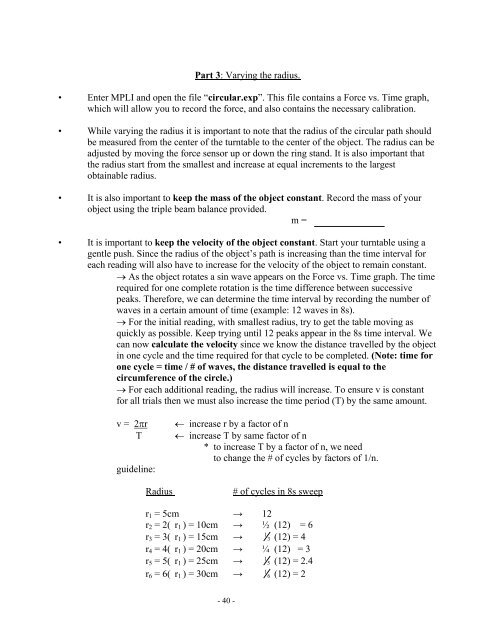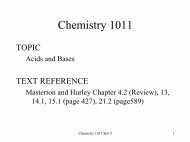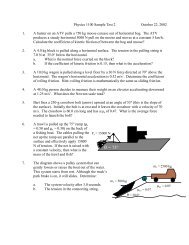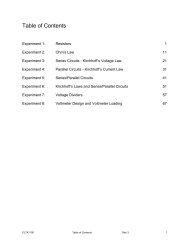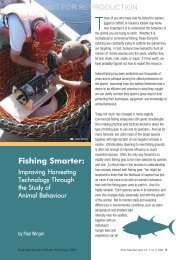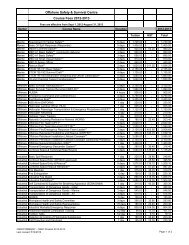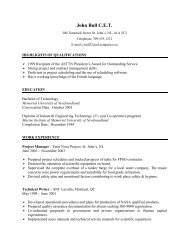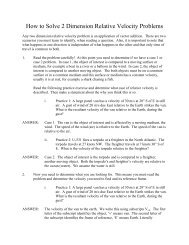Create successful ePaper yourself
Turn your PDF publications into a flip-book with our unique Google optimized e-Paper software.
Part 3: Varying the radius.• Enter MPLI and open the file “circular.exp”. This file contains a Force vs. Time graph,which will allow you to record the force, and also contains the necessary calibration.• While varying the radius it is important to note that the radius of the circular path shouldbe measured from the center of the turntable to the center of the object. The radius can beadjusted by moving the force sensor up or down the ring stand. It is also important thatthe radius start from the smallest and increase at equal increments to the largestobtainable radius.• It is also important to keep the mass of the object constant. Record the mass of yourobject using the triple beam balance provided.m =• It is important to keep the velocity of the object constant. Start your turntable using agentle push. Since the radius of the object’s path is increasing than the time interval foreach reading will also have to increase for the velocity of the object to remain constant.→ As the object rotates a sin wave appears on the Force vs. Time graph. The timerequired for one complete rotation is the time difference between successivepeaks. Therefore, we can determine the time interval by recording the number ofwaves in a certain amount of time (example: 12 waves in 8s).→ For the initial reading, with smallest radius, try to get the table moving asquickly as possible. Keep trying until 12 peaks appear in the 8s time interval. Wecan now calculate the velocity since we know the distance travelled by the objectin one cycle and the time required for that cycle to be completed. (Note: time forone cycle = time / # of waves, the distance travelled is equal to thecircumference of the circle.)→ For each additional reading, the radius will increase. To ensure v is constantfor all trials then we must also increase the time period (T) by the same amount.v = 2πrTguideline:Radius← increase r by a factor of n← increase T by same factor of n* to increase T by a factor of n, we needto change the # of cycles by factors of 1/n.# of cycles in 8s sweepr 1 = 5cm → 12r 2 = 2( r 1 ) = 10cm → ½ (12) = 6r 3 = 3( r 1 ) = 15cm →1 3 (12) = 4r 4 = 4( r 1 ) = 20cm → ¼ (12) = 3r 5 = 5( r 1 ) = 25cm →1 5 (12) = 2.4r 6 = 6( r 1 ) = 30cm →1 6 (12) = 2- 40 -


